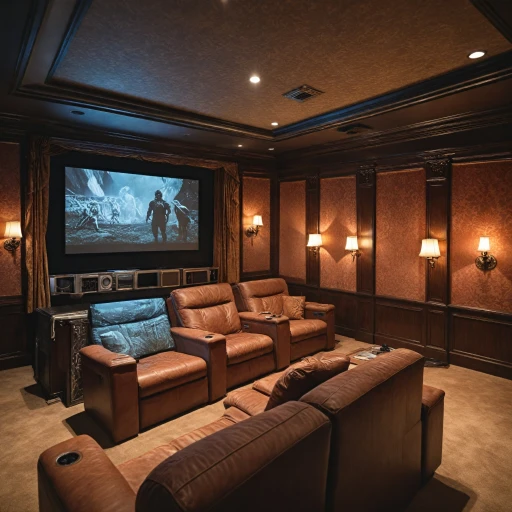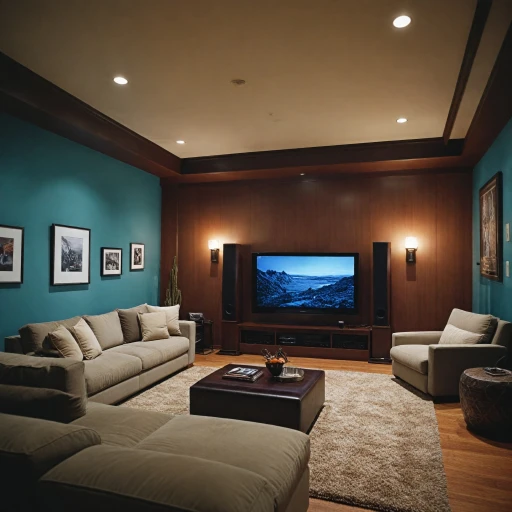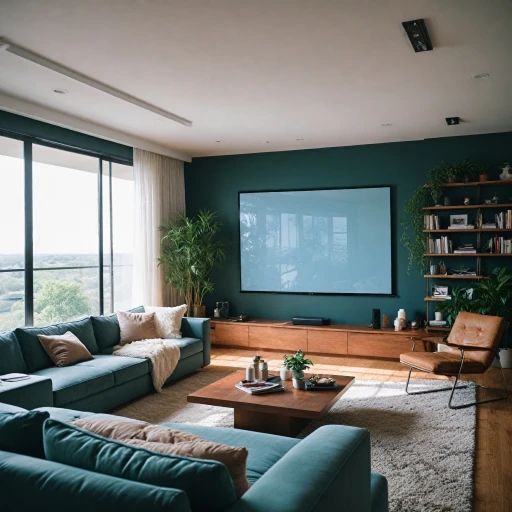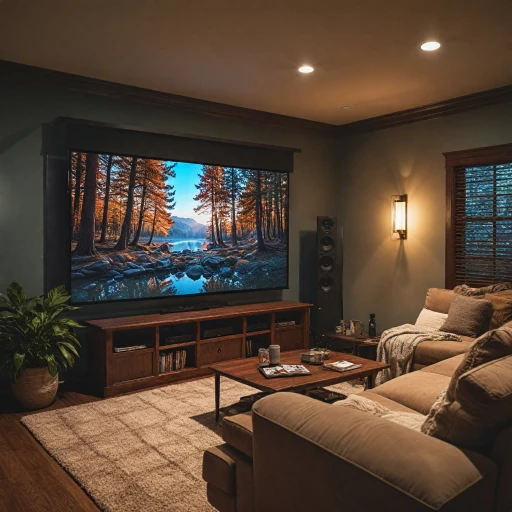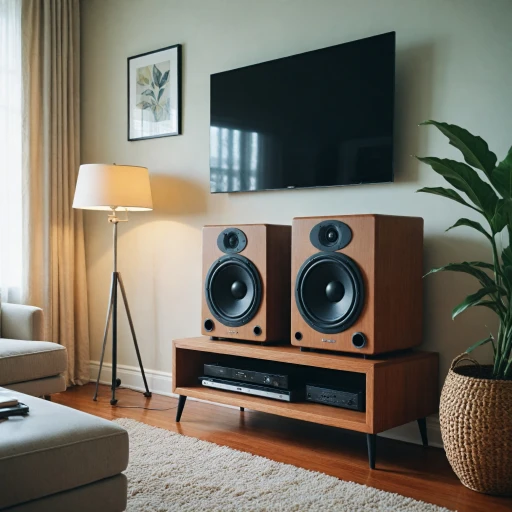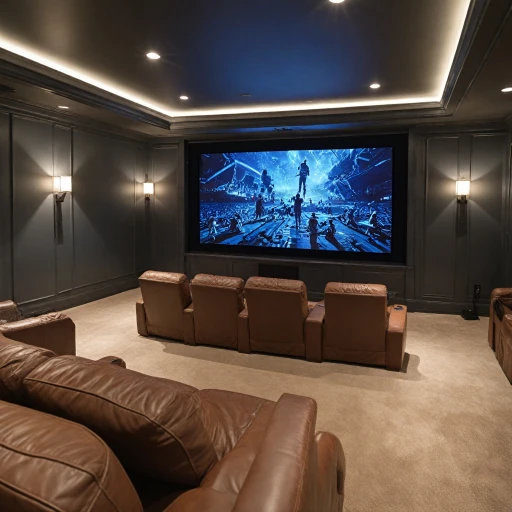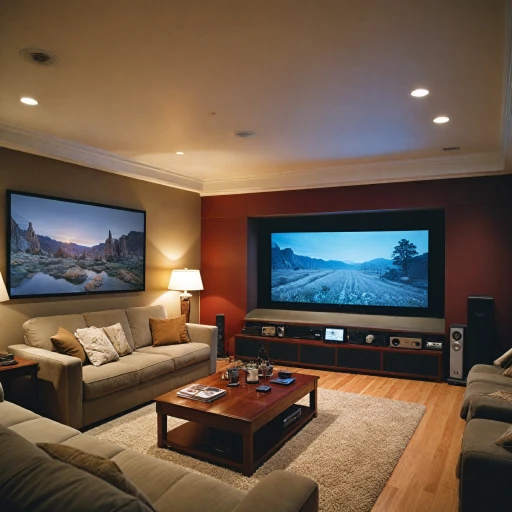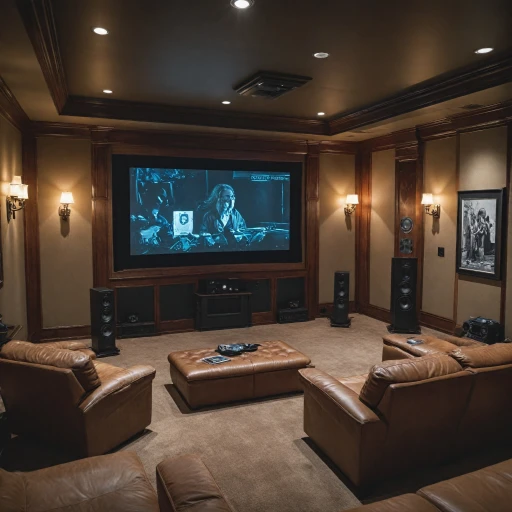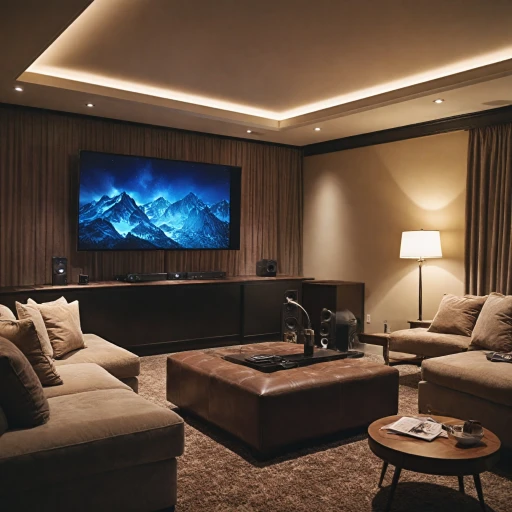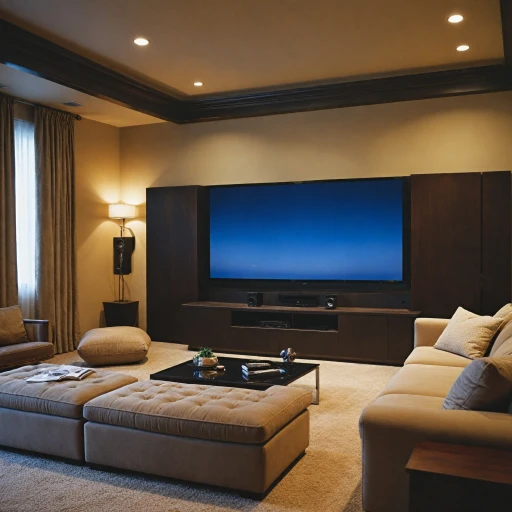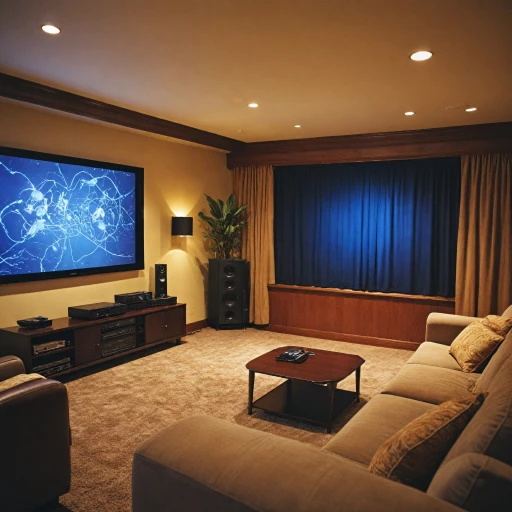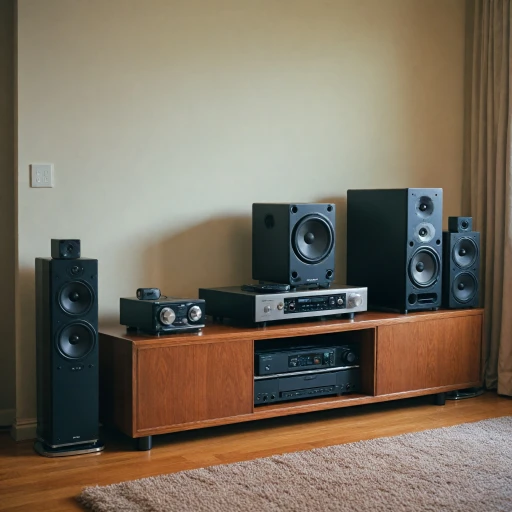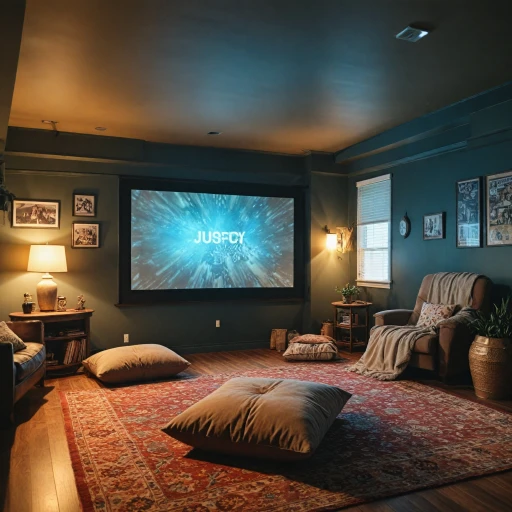
Understanding the Role of a Black Projector Screen
The Game-Changing Impact of Black Projector Screens
Black projector screens have emerged as a game-changer in the realm of home theater setups. They offer a sophisticated alternative to traditional white screens, catering to enthusiasts seeking to elevate their visual experiences. But, what exactly makes black screens stand out? Unlike standard white projector screens, black screens are designed to enhance color contrast and image clarity. This is particularly beneficial in spaces where ambient light may disrupt the viewing experience. Black screens boast impressive ambient light rejecting (ALR) capabilities, curbing the interference from surrounding light sources and preserving the projected images' vividness. This enhanced capability is especially crucial for ultra short throw and short throw projectors, where the projection distance to the screen is minimal. These projectors, often set up close to the screen, demand exceptional light rejection to deliver high-quality images without being washed out by ambient light. Think about the fixed frame of these screens, in particular brands like Elite Screens or Black Diamond. They promise a more cinematic experience with gains that ensure optimal brightness. Whether it's a spectrally balanced projection for home theaters or a sleek, modern look for professional spaces, these screens add value. Adopting a black screen in your setup also comes with considerations for price and installation. While they may sit at a higher price point compared to traditional white screens, their performance enhancements make them a worthy investment. To learn more about integrating black screens into your home theater space, check out this comprehensive resource on enhancing your home theater with ambient light rejecting screens.Comparing Black vs. White Projector Screens
When diving into the world of home theater projection, it becomes clear that the choice between black and white projector screens significantly influences the viewing experience. Each screen type has its distinct benefits and drawbacks, contingent on factors like room setup, lighting conditions, and personal preferences.
Light Rejection Capabilities
A critical aspect of black screens is their ability to reject ambient light, enhancing image contrast and clarity even in well-lit rooms. This feature is particularly beneficial for those dealing with challenging light conditions, making them a preferred option for enhancing home theater projection setups.
Color and Shadow Depth
The black surfaces of these screens excel in providing richer colors and deeper blacks, rivaling professional theater quality. In contrast, white screens may struggle with contrast under ambient light but perform exceptionally well in controlled dark rooms by offering bright, crisp images.
Versatility and Compatibility
For individuals utilizing short throw or ultra short throw projectors, black screens can complement these technologies effectively, whereas traditional white screens often require precise setups to optimize projection.
Cost Considerations
Price is another differentiator. Black projector screens might demand a higher initial investment due to their enhanced technology and materials, while white screens typically present a more budget-friendly option. Analyzing your specific needs and weighing them against your budget will guide the best choice.
As the technology matures, so does the range of product offerings from brands like Elite Screens, featuring an array spanning fixed frame to floor rising options. The Spectra screen, Black Diamond, and UST ALR screen cater to diverse user demands, ensuring everyone finds an ideal match.
Choosing the Right Black Projector Screen for Your Space
Finding the Perfect Match for Your Home Theater
Selecting the right black projector screen for your space is a critical step in creating an immersive viewing experience. Various factors need to be considered to ensure that your chosen projection screen not only fits well into your room but also enhances the performance of your projector.- Type of Projector: Consider whether you're using a standard, short throw, or ultra short throw (UST) projector. Each type interacts differently with screens. For instance, UST projectors work best with screens designed to capture their specific light projection, reducing ambient light interference.
- Room Lighting Conditions: Be aware of the ambient light in your room. Black projector screens, often dubbed ambient light rejecting (ALR) screens, excel in spaces with high light levels. They maintain vivid image quality by rejecting unwanted light, ensuring better color contrast and dynamic visuals.
- Screen Gain: Gain refers to how much light a screen reflects. A higher gain means a brighter image, which is preferable in rooms with more ambient light. However, a lower gain screen can offer better viewing angles, crucial if seating is spread out.
- Installation Space: Consider where you'll be installing the screen. Options include fixed frame, ceiling mount, and even floor rising screens. Each option has its pros and cons, with fixed frame screens generally offering the best tension and image flatness.
- Material and Quality: Screen material impacts both quality and price. Screens like the "Black Diamond" or similar high-end options deliver superior light rejection but come at a premium. Evaluate budget versus needed specifications carefully to balance quality and affordability.
- Size and Aspect Ratio: Choose the size based on your projector's throw distance and room dimensions. A professional guide on understanding projector terms could also assist you in making the right decision. The aspect ratio, whether 16:9 for movies or 4:3 for presentations, should align with your primary viewing content.
Installation Tips for Black Projector Screens
Steps for Successful Black Projector Screen Installation
Setting up your black projector screen is a fundamental step in optimizing your home theater. The right installation can significantly enhance your viewing experience by improving light rejection and blending seamlessly with your decor. Below are detailed steps and considerations for installing a projection screen effectively:- Determine the Ideal Location
- Analyze your room layout to decide on the best spot for your screen. Consider the positioning of your projectors and how the screen interacts with both natural and artificial lighting conditions. Black screens typically fare better in minimizing ambient light impact than traditional white screens.
- Choose Your Installation Style
- Fixed frame, floor rising, or ceiling-mounted screens are all viable choices. Each style has its advantages, with fixed frames providing a sturdy setup and floor rising screens offering portability. Evaluate your space and determine which suits your projector setup, whether you have ultra short throw (UST) or standard throw projectors.
- Install at the Right Height and Angle
- Install your screen at a height and angle that ensures comfortable viewing. Consider the typical height at which viewers will be seated. A screen material with light rejecting properties, like ALR screens, needs precise angling to fully leverage ambient light rejection (ALR) capabilities.
- Secure and Align Properly
- Ensure your screen is securely fixed to avoid shifting or tilting. Use level tools to maintain a straight horizon. This ensures the light from your projector hits evenly across the screen surface.
- Assess Throw Distance
- Adjust the throw distance of your projector, based on its type. Short throw projectors require less space, while long throw projectors need more. Proper throw distance helps in achieving a crisp and vibrant image, especially with high-end screens like black diamond or spectra models.
- Consider Professional Help
- For complex installations or if you're unsure about the process, consider hiring professional help. Expertise can guarantee optimal positioning and screen calibration, particularly if you’re integrating with a sophisticated setup including ceiling projectors or advanced screen technologies.
Maintenance and Care for Black Projector Screens
Taking Care of Your Black Projector Screen: What You Need to Know
Proper maintenance and care are crucial for preserving the life and performance of your black projector screen. Given its design to combat ambient light rejection, a well-maintained screen ensures that your viewing experience remains optimal. Here are some practical tips:- Regular Cleaning: Dust and grime can accumulate on the surface of your projection screen, impacting its ability to deliver sharp and vibrant images. Use a microfiber cloth to gently wipe the screen. Avoid using any harsh chemicals or abrasive materials that can damage the screen material.
- Protect from Damage: It's important to keep items and objects away from the screen to prevent accidental scratches or tears. Consider installing a fixed frame to keep the screen taut and well protected.
- Avoid Direct Sunlight: While black screens are designed to offer enhanced viewing in ambient light conditions, direct sunlight can still cause fading over time. Ensure your screen is not exposed to direct sunlight for extended periods.
- Check Your Projector's Settings: Short throw, ultra short throw projectors, and ust models each have different settings that work best with black screens. Consistently check that your projector configurations align with the screen's capabilities, especially concerning resolution and contrast.
- Adjust Mounting: If you're utilizing a floor rising or ceiling-mounted setup, periodically check the alignment and stability of your screen's mounting. This can prevent any potential warping or sagging.
- Understand Screen Material Care: Different screens from manufacturers like Elite Screens or Black Diamond come with specific care instructions. Follow the manufacturer's guidelines on cleaning and maintenance carefully.

